
|
A Message from the Director, Prof. Jian-Ping Wang
Welcome, everyone to the 9th C-SPIN Quarterly Newsletter. First, I have had an extremely busy but fruitful quarter for C-SPIN. I have finished my annual chat with all 33 C-SPIN PIs to get first-hand, updated information about the exciting research going in the Center. As a bonus, I also learned that our many STARnet students are doing well and moving strongly along their career paths. Two highlights stand out: Prof. Sara Majetich’s demonstration of a sub-20 nm MTJ and the efficient and coherent action of C-SPIN PIs (Profs. Ramesh, Takeuchi, Crowell, Palmstrøm, Wang, and Koester) working together to develop perpendicular Heusler alloys and integrate them with tunnel barriers, multiferrioic materials (e.g. BFO layers) and different spin channels.
This annual series of chats also allows me to discover the ways I can coordinate PIs for large group projects that address critical needs. For example, we helped Prof. Maxim Tsoi find a way to collaborate with Prof. Bhrat Jalan to grow high temperature antiferromagnetic materials and speed up his research so that he can keep his world-leading position on electrically switching antiferromagnetic materials.
Second, C-SPIN has continued to address the feedback from the 3rd annual review last September. For example, we recently recruited Prof. Tony Low (Univ. of Minnesota), a former IBMer and well-recognized SRC/NRI veteran, to work on the first-principle calculations and search for new magnetic tunnel barriers and new perpendicular Heusler alloys. Read More.
C-SPIN in the Spotlight at the Joint MMM-Intermag Conference
More than ten C-SPIN PIs and nearly twenty C-SPIN students and postdoctoral fellows presented their C-SPIN research at the world's largest magnetic and spintronics conference this January in San Diego. Among them were three C-SPIN PIs who delivered prestigious invited talks on future spintronic materials and devices to more than 1,800 participants from magnetic and spintronic research institutions and industry.
Prof. Maxim Tsoi from University of Texas at Austin, who demonstrated the world's first electrical switching of antiferromagnetic material, gave a talk on the interconnection between magnetic states and transport currents in antiferromagnetic Sr2IrO4.
Prof. Christian Binek from University of Nebraska, who pioneered the research on the magnetoelectrical switching study of Cr2O3, gave a talk on magnetoelectric antiferromagnets for ultra-low power memory and logic and device applications.
Prof. Geoff Beach from MIT, who co-discovered the voltage controlled magnetism on GdOx/Co bilayer structure, gave a talk on enhanced magneto-ionic switching of interface anisotropy in Pt/Co/GdOx films. Read More.
Q&A with Prof. Sara Majetich, Carnegie Mellon University
From Jian-Ping Wang, C-SPIN Director: It’s no accident that Sara Majetich has been with C-SPIN from the beginning. I knew of her stellar work on nanopatterning and conductive atomic force microscopy (C-AFM), so it was easy to imagine the MTJ’s of the future being made in her lab. Below is a short Q&A between Prof. Majetich and Michael Lotti. Read it and you’ll see why I was right.
Q: Describe the C-SPIN tasks that your group is working on.
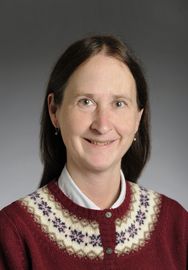 A: Our work is in Theme 1. We’re focusing on conductive C-AFM measurements on MTJs that we make from materials that other C-SPIN PIs send to us. These images capture our work better than anything else. They show our success making MTJs of the same size with mostly uniform magnetic properties. Still, there are slight variations, and we aren’t as small as we need to be. The goal is to make < 20 nm devices with highly uniform switching properties. Using nanoparticle masking, we have made devices as small as 7 nm, but they were not thermally stable. Today the world’s smallest working MTJs are 11 nm in diameter, and we hope to break this record. Read More.
A: Our work is in Theme 1. We’re focusing on conductive C-AFM measurements on MTJs that we make from materials that other C-SPIN PIs send to us. These images capture our work better than anything else. They show our success making MTJs of the same size with mostly uniform magnetic properties. Still, there are slight variations, and we aren’t as small as we need to be. The goal is to make < 20 nm devices with highly uniform switching properties. Using nanoparticle masking, we have made devices as small as 7 nm, but they were not thermally stable. Today the world’s smallest working MTJs are 11 nm in diameter, and we hope to break this record. Read More.
Oleg Mryasov, In Memoriam
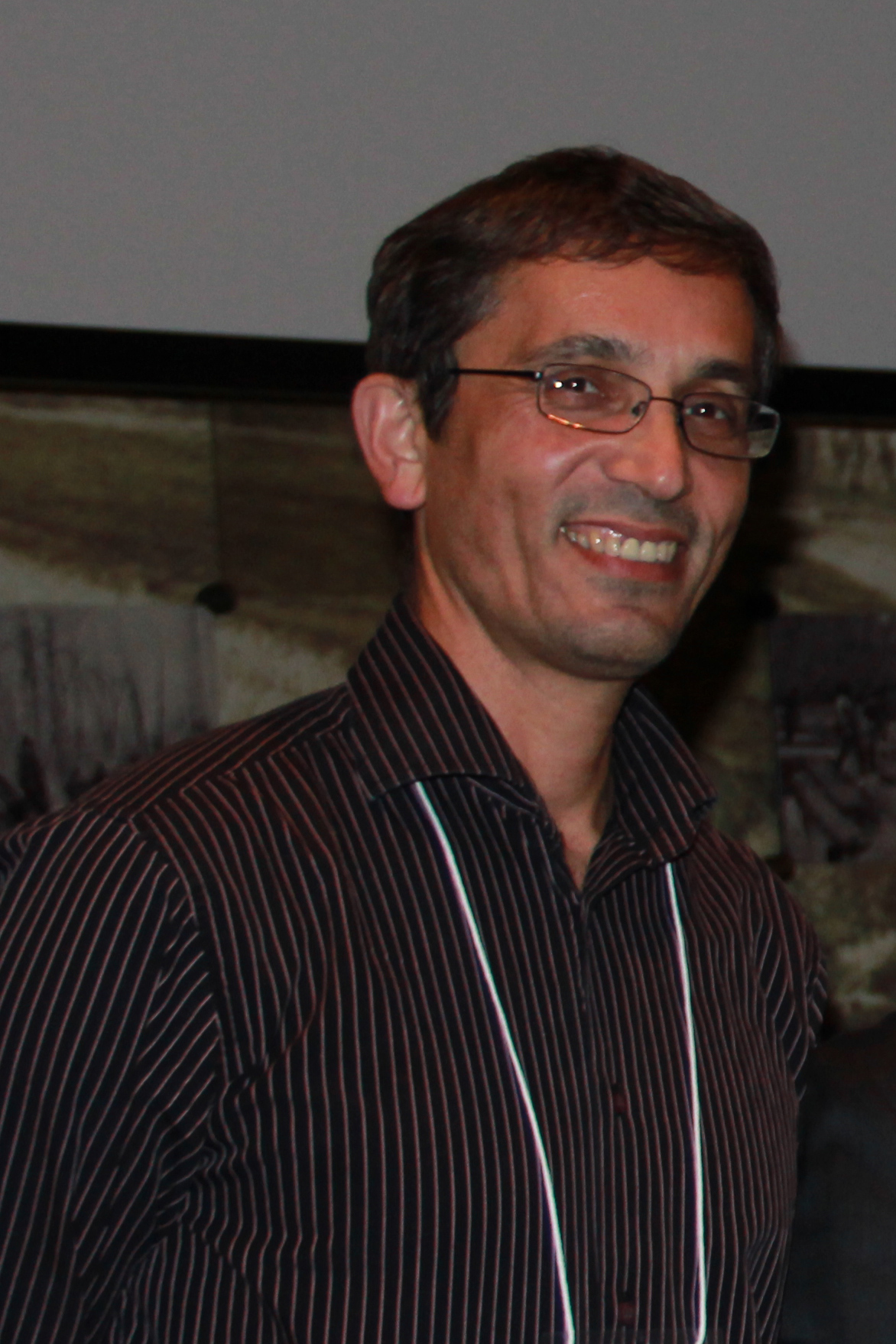 We are sad to report that our colleague Oleg Mryasov passed away from stomach cancer right after Christmas.
We are sad to report that our colleague Oleg Mryasov passed away from stomach cancer right after Christmas.
Oleg grew up in Yekaterinburg (in central Russia), where he was a standout student and swimmer. He received his doctoral degree in Solid State Physics from the Russian Academy of Sciences in 1993 and worked as a post-doc at Northwestern University (under Arthur Freeman) from 1993-1999. From 1999-2001, he held joint Research Engineer/Technical Staff appointments at UC Berkeley and Sandia National Laboratories. He joined the Seagate Research Center in 2001 as a Research Staff Member and was later promoted to Principal Research Engineer. He joined the Department of Physics & Astronomy at the University of Alabama in 2009, where he collaborated with Bill Butler on a number of projects, including several C-SPIN initiatives. In the past year, he began working as a senior scientist at Western Digital and with an adjunct appointment at the University of Minnesota. Read More.
C-SPIN Welcomes New PI, Jiwei Lu from the University of Virginia
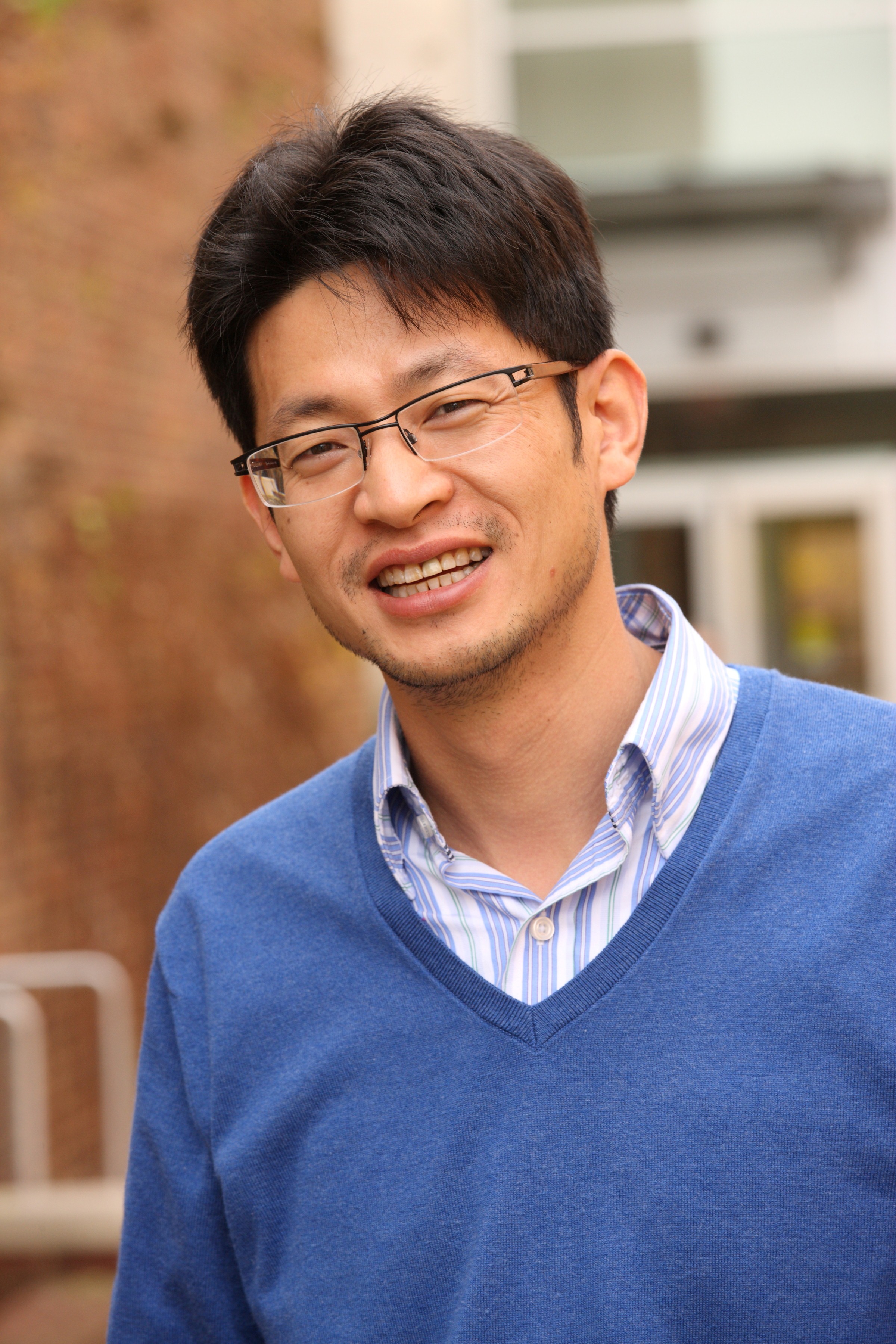 Jiwei Lu, Research Associate Professor in the Department of Materials Science and Engineering at the University of Virginia, will explore the synthesis of a host of oxide and nitride thin films using reactive Bias Target Ion Beam Deposition (RBTIBD), a novel deposition technique. This technique provides low-energy sputter ion fluxes via end-Hall plasma sources and highly crystallized oxide thin films with very smooth surfaces. The goal is to incorporate thin films materials into spintronic devices to reduce the switching energies without significant trade-offs in other performance metrics such as the thermal stability. Read More. Jiwei Lu, Research Associate Professor in the Department of Materials Science and Engineering at the University of Virginia, will explore the synthesis of a host of oxide and nitride thin films using reactive Bias Target Ion Beam Deposition (RBTIBD), a novel deposition technique. This technique provides low-energy sputter ion fluxes via end-Hall plasma sources and highly crystallized oxide thin films with very smooth surfaces. The goal is to incorporate thin films materials into spintronic devices to reduce the switching energies without significant trade-offs in other performance metrics such as the thermal stability. Read More.
Announcing: Topological Spintronic Devices and Beyond Workshop
The first ever Topological Spintronic Device Workshop will be held at the University of Minnesota May 12-13 – directly following the internal C-SPIN mid-year review. The aim of the Workshop is to candidly discuss the promises and challenges of topological insulators that can accelerate the development of spintronic computing devices. Heterostructures that interface ferromagnets with materials with strong spin-orbit coupling will be a prime topic of conversation.
Jian-Ping Wang (University of Minnesota) and Nitin Samarth (Penn State) are organizing the workshop. The list of confirmed speakers including Nobel Laureate, Albert Fert, has been posted soon on the Workshop website. Registration information will be posted in the coming week. Questions regarding the workshop can be directed to Marie L. Rahne at: tsd2016 (AT) umn.edu
Post-Doc and Student Profiles
Heidi Seinige Ph.D. Candidate at the University of Texas at Austin
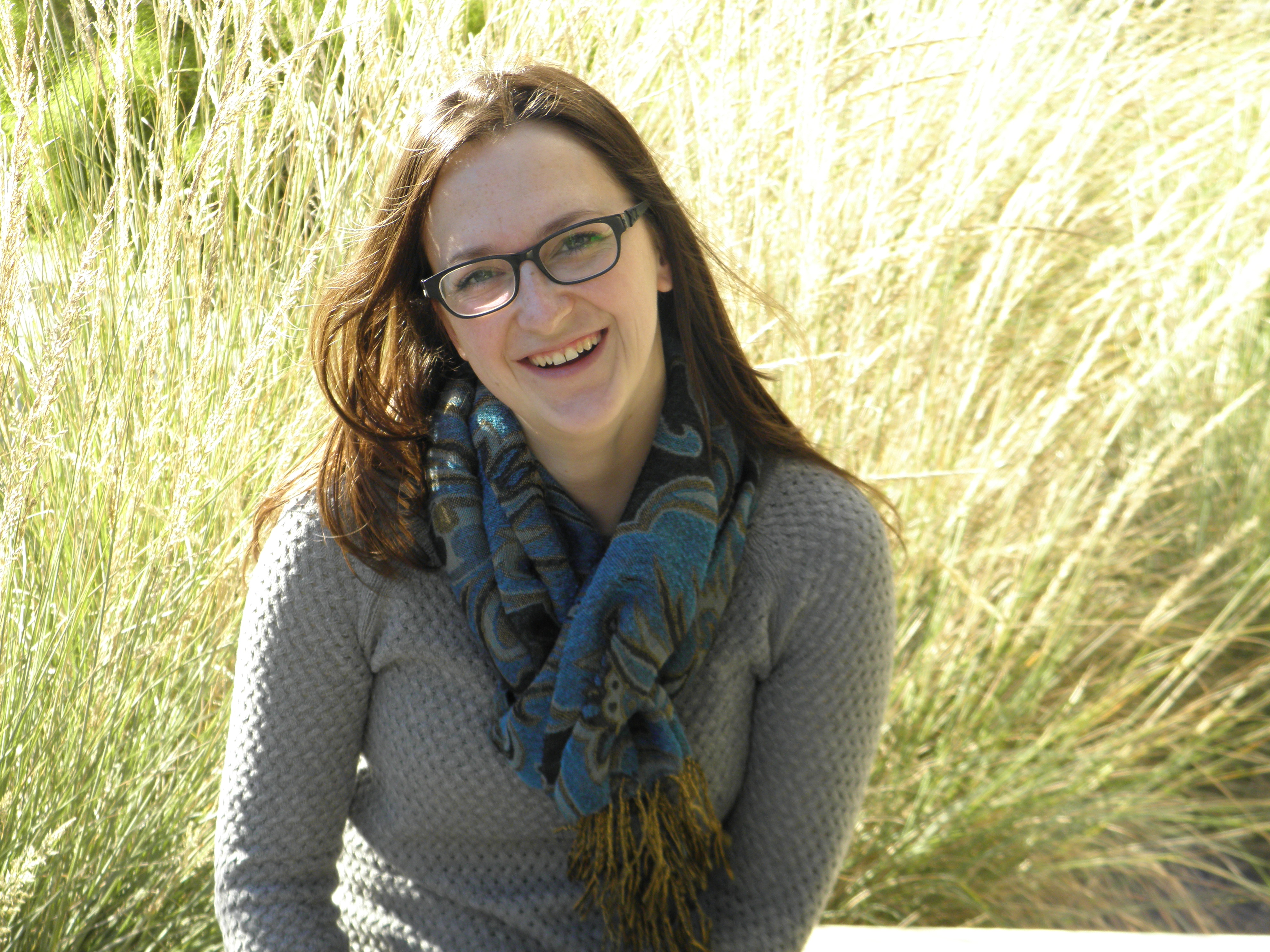 I am currently working on understanding the correlation between the orbital states, electronic transport properties, and magnetic properties in transition metal oxides such as antiferromagnetic Sr2IrO4 (Theme 4). Until now, antiferromagnetic materials have only been used as inactive components in spintronic devices – for example, as exchange biased layers in spin valves or magnetic tunnel junctions. But in the emerging field of antiferromagnetic spintronics, we’re thinking of them as active components. They offer ultra-fast switching schemes and they are insensitive to magnetic field perturbations (and therefore allow for higher memory density). Read More. I am currently working on understanding the correlation between the orbital states, electronic transport properties, and magnetic properties in transition metal oxides such as antiferromagnetic Sr2IrO4 (Theme 4). Until now, antiferromagnetic materials have only been used as inactive components in spintronic devices – for example, as exchange biased layers in spin valves or magnetic tunnel junctions. But in the emerging field of antiferromagnetic spintronics, we’re thinking of them as active components. They offer ultra-fast switching schemes and they are insensitive to magnetic field perturbations (and therefore allow for higher memory density). Read More.
Hamid Almasi Ph.D. candidate at the University of Arizona
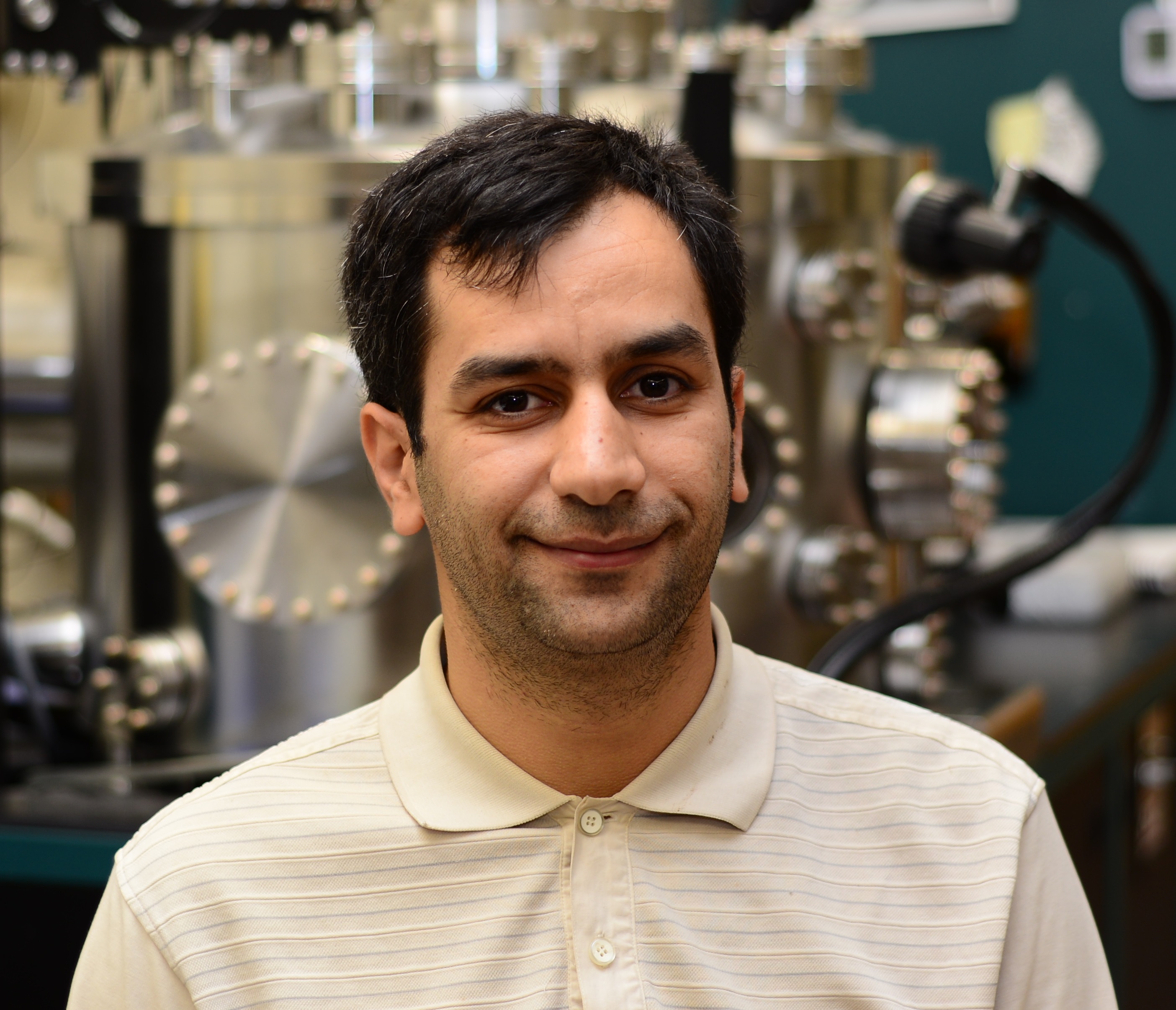 I am currently working on perpendicular magnetic tunnel junctions (p-MTJs), the building blocks for the vast majority of new spintronic computing devices. In particular, I am trying to simultaneously improve magneto-electric properties (such as PMA and TMR) and also device performance characteristics (such as thermal budget). This work is primarily under Theme 1 and Theme 4.
I am also studying the VCMA effect in pMTJs with interfacial PMA. Due to the nature of my work, we also provide high-quality MTJs for a number of other researchers in C-SPIN. I have several published and pending papers relevant to all of my research. Read More.
To unsubscribe, respond to this email with the word "unsubscribe" in the subject of the email.
University of Minnesota's mass email privacy statement |